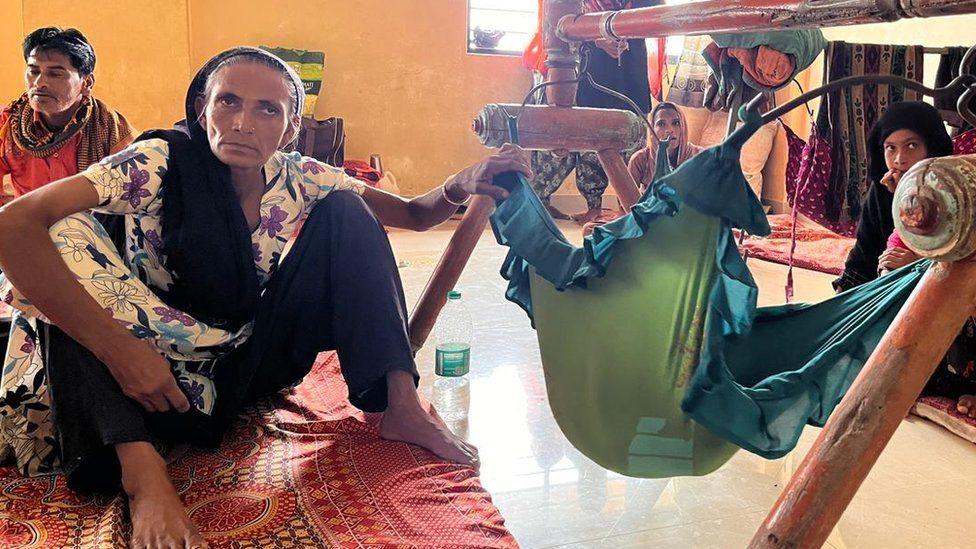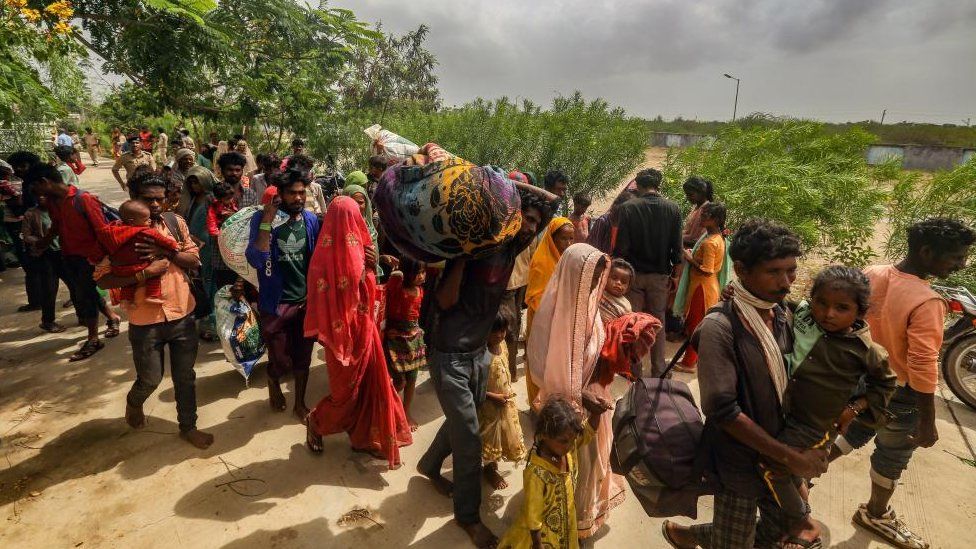A severe cyclone named Biparjoy, meaning “disaster” in Bengali, is approaching India and Pakistan, prompting the evacuation of over 150,000 people in its path.
The cyclone poses a significant threat to homes and crops as it is expected to make landfall in Gujarat, India’s western state, on Thursday evening local time.
Preliminary reports indicate heavy rainfall, rough seas, and high tides along the coastal regions of Gujarat. Cyclone Biparjoy is projected to hit the area between the Jakhau port, situated between Mandvi in Gujarat and Keti Bandar in Pakistan’s Sindh province, sometime between 16:00 and 20:00 local time.
Pakistan’s disaster management agency has issued warnings of storm surges reaching heights of 3-4 meters (10-13 feet) along the coastline from Karachi to Gujarat.
Meanwhile, Alok Pandey, Gujarat’s Relief Commissioner, highlighted that although the cyclone’s speed has decreased, its wind speeds are still expected to be dangerously high at around 110-120 km/h (68-75 mph) during landfall.
India’s meteorological department has cautioned that the cyclone will cause significant damage to roads, thatched houses, and vital infrastructure such as electricity towers and trees along Gujarat’s coast.
Efforts are underway to ensure the safety of residents in the affected areas, with evacuation procedures and emergency measures being implemented. The authorities are closely monitoring the situation and providing updates to the public as the cyclone approaches.
The state’s health minister, Rushikesh Patel, asked people to stay where they were and avoid travelling. “Our aim is to ensure zero casualties,” he said.
At least seven deaths were reported amid heavy rains in India this week.
The victims included two children crushed by a collapsing wall, and a woman hit by a falling tree while riding a motorbike, AFP news agency reported.
In Pakistan, the storm is expected to strike the coast of Sindh province. Authorities have already evacuated 81,000 people from the south-eastern coast and set up 75 relief camps at schools.
Pakistan’s climate change minister Sherry Rehman said that Karachi, the province’s largest city with a population of more than 20 million, was not under immediate threat but emergency measures were being taken.
Meteorologists warned that high tides could inundate low-lying areas along the coasts.

Several parts of coastal Gujarat have witnessed heavy rains and high-speed winds since Wednesday.
On Thursday morning, strong winds and rough sea conditions were reported in Mandvi.
The Jakhau Port, usually bustling with activity, wore a deserted look because the entire village near the shoreline has been relocated.
Gujarat state officials said 67,000 people had been evacuated from coastal areas.

Several train services have been suspended in Gujarat, while the ports of Kandla and Mundra – two of India’s largest – have stopped operations, authorities said.
Fishing has stopped along the Gujarat coast, while fishermen in Pakistan’s coastal region have also been warned to stay off the water.
Six national disaster relief teams have been deployed in key areas in the Kutch region of Gujarat for relief work. They will focus on ensuring that essential services remain unaffected or at least restored soon, depending on the cyclone’s intensity.
The India Meteorological Department expects Biparjoy to “fall in intensity” after crossing.
Cyclones, also known as hurricanes in the North Atlantic and typhoons in the Northwest Pacific, are a regular and deadly phenomenon in the Indian Ocean. Rising surface temperatures across the Arabian Sea in recent years due to climate change have made the surrounding regions even more vulnerable to devastating storms.
Cyclone Tauktae in May 2021 was the last severe cyclone that struck in the same region. It killed 174 people.
The evacuations for Biparjoy have brought back grim memories from 25 years ago when another cyclone hit the Gujarat coast, leaving a trail of death and destruction. Official figures put the death toll at around 4,000 but unofficially, locals say the number is much higher.
“We have seen cyclones in the past, but this time it looks very bad,” says 40-year old Abbas Yakub, a fisherman sheltering at a primary school in Mandvi. He is among 150 people at the temporary shelter.
“Our home is exactly at the coast, waves already touched our house yesterday morning. We don’t know what we will go back to,” he says.

